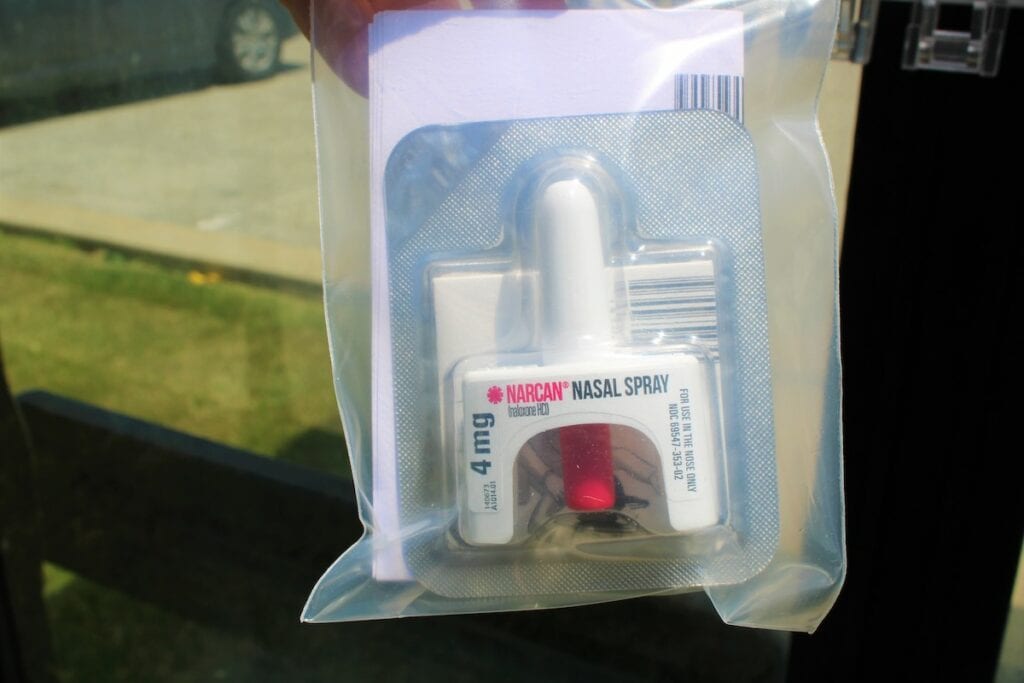Out of 10,000 doses of naloxone — a lifesaving drug which can reverse an opioid overdose — distributed throughout Indiana, only one dose went to an African American.
This is according to a study conducted by Overdose Lifeline, the statewide distributor of naloxone. While media depictions often paint opioid addiction as an issue facing white Americans, the Substance Abuse and Mental Health Services Administration found the rate of overdose deaths among Black Americans is rising. From 2015 to 2016, African Americans faced a 41% increase in opioid-related deaths, compared to 21% in the general population.
Gina Fears, assistant director of recovery and community services at Public Advocates in Community Re-Entry (PACE), said untreated substance abuse disorder and the naloxone disparity exist for myriad reasons, including stigma, lack of trust in medical professionals and religious beliefs.
“Beyond historic disparities, there’s also a lack of education on what [naloxone] is and how to use it,” Fears said. “That’s why PACE has begun major outreach to supply factual data about how the Black community is affected by the opioid epidemic.”

PACE has set up a “nalox-box” outside of the Genesis Plaza in Martindale-Brightwood at 2855 N. Keystone Ave. Free doses of naloxone and instructions on how to administer the inhalant are in the box. The organization also offers classes on how to use naloxone.
While Black Americans are less likely than whites to abuse opioids such as oxycodone and morphine, the powerful opioid fentanyl is often laced in cocaine, a drug common in the Black community. Further, “lean” is popular among young African Americans. A combination of cough syrup — which contains codeine and promethazine — soda, and often alcohol, lean is an often-overlooked form of opioid abuse, according to experts.
Natasha Cheatham of the Minority Recovery Collective Inc. said many people who drink lean don’t realize it’s directly correlated with opioids. However, the chemical compounds of codeine and heroin are shockingly similar, and overdoses on codeine continue to rise. From 2004 to 2011, the Centers for Disease Control and Prevention found the number of hospital visits for codeine-related illness spiked 286%.
With the number of opioid users rising, Fears said it’s important to have naloxone on hand because you never know who might need it.
“Persons that are using and may overdose are not wearing badges indicating that,” Fears said. “We’re all a part of our community, and I want everyone to be prepared for anything that’s going to happen. The woman singing next to you in church or the man at the gas station might need it, and you could save their life.”
If you see someone overdosing, Fears said to call 911 first, and then administer the naloxone. Common symptoms of an opioid overdose include unconsciousness, slow or shallow breathing, faint heartbeat and an inability to speak.
Fears said another reason why it’s so important to have naloxone on hand is because many Black and brown Americans have negative experiences with first responders. If naloxone is already administered and someone is there to speak to paramedics when they arrive, she said there is likely to be a better outcome.
“We need to be sure we’re caring for our communities,” Fear said. “We need to have [naloxone] on us in order to do that, to help as many people as we can.”
Contact staff writer Breanna Cooper at 317-762-7848. Follow her on Twitter @BreannaNCooper.







